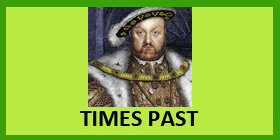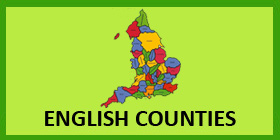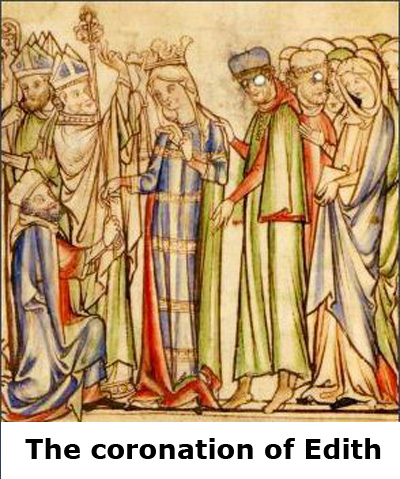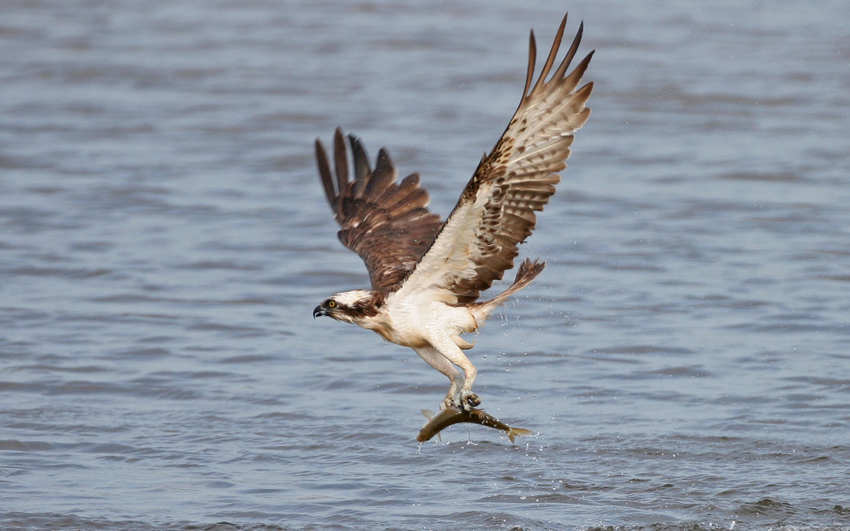




Back to the Rutland Page

- The Royal Connection
- Rutland Eats
- Owlbut's Birdwatch
- Rutland VIPs
 This seems a pretty good connection.
In 1060 Edward the Confessor gave Rutland to his wife Edith. Not a bad present. He had married her in 1045 but as crystal is the traditional present for 15
years of marriage, maybe it was for her 35th birthday.
This seems a pretty good connection.
In 1060 Edward the Confessor gave Rutland to his wife Edith. Not a bad present. He had married her in 1045 but as crystal is the traditional present for 15
years of marriage, maybe it was for her 35th birthday.
Edith was the daughter of Godwin, probably the most powerful earl in England at the time. Edith had six brothers and two sisters. One of her brothers
was Harold who would, on Edward's death in January 1066, take the throne of England. Later that year William of Normandy landed in England as he also claimed the
throne and this led, in October 1066, to the Battle of Hastings and Harold's death.
Edith, who was a very wealthy woman owning a lot more land than just Rutland, survived the Norman conquest and when she died in Winchester on 18
December 1075, William the Conqueror arranged for her body to be brought to London where she was buried alongside her husband in Westminster Abbey.
![]() Back to the top
Back to the top
In such a small county it was quite
difficult to find a specific food but I think we did it. On Valentine's Day, each year, it is the custom in a few villages in Rutland, Barrow and Teigh being
two examples, to give away buns to all the children in the village.
The buns were known as plum shuttles as they were the same shape as a weaver's shuttle. A
shuttle, in weaving, is a tool designed to neatly and compactly store a holder that carries the thread of the weft yarn while weaving with a loom. The buns are an oval shape with a slight point at one end. The custom has probably been going on since hand looms were common in
many houses.
The buns are a yeast raised bread bun filled with dried fruit and candied peel.
My thanks again to the Foods of England Project.
![]() Back to the top
Back to the top
The osprey, as you can see if you look at the small fish clasped in its claws, is a fish-eating bird of prey. It is on the amber
list of birds and there are only thought to be about 200 to 250 breeding pairs in the country. They mainly breed in Scotland but they began breeding at Rutland Water
after being introduced there in 1996. One of the first ospreys was called "Mr Rutland". During spring and summer you might be able to see them at any large area of freshwater. In flight they have white underwings while the
main feather colour is brown and cream and the legs are blue. The beak is of medium length, black, hooked and chunky.
Ospreys are between 52 and 60 cms in length, have a wingspan between 145 and 170 cms and weigh between one and a half and two kilograms. Ospreys spend the winter
in Africa and arrive back in April, leaving again in September.

Seven random people who were born in Rutland in the last 100 years:-
I couldn't find anyone. Sorry.
![]() Back to the top
Back to the top

